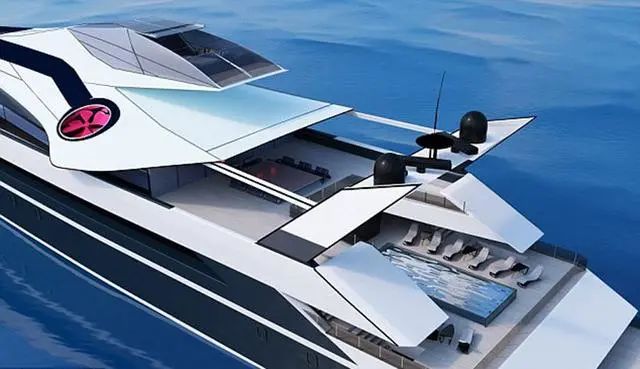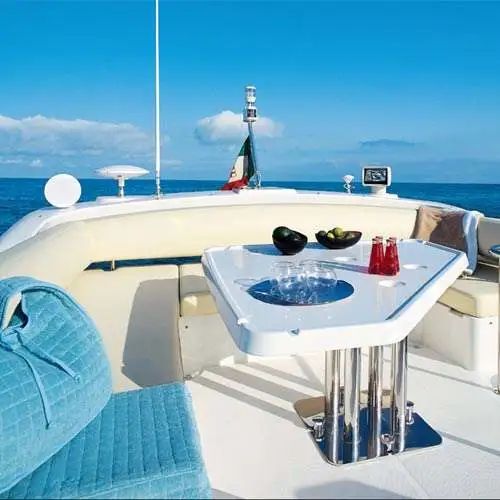Composite materials have been used commercially for more than 50 years. In the initial stages of commercialization, they are only used in high-end applications such as aerospace and defense. As technology continues to advance, composite materials are beginning to be commercialized in different end-user industries such as sporting goods, civil aviation, automotive, marine, civil engineering and construction. So far, the cost of composite materials (both raw materials and manufacturing) has dropped significantly compared to previous years, allowing them to be used on a large scale in an increasing number of industries.
The composite material is a mixture of fiber and resin material in a certain proportion. While the resin matrix determines the final shape of the composite, the fibers act as reinforcements to strengthen the composite part. The ratio of resin to fiber varies with the strength and stiffness of the part required by the Tier 1 or Original Equipment Manufacturer (OEM).
The primary load-bearing structure requires a higher proportion of fibers compared to the resin matrix, while the secondary structure requires only a quarter of the fibers in the resin matrix. This applies to most industries, the ratio of resin to fiber depends on the method of manufacture.
The marine yacht industry has become the main force in the global consumption of composite materials, including foam core materials. However, it has also experienced a downturn, with shipbuilding slowing and inventories climbing. This reduction in demand may be due to consumer caution, declining purchasing power, and the reallocation of limited resources to more profitable and core business activities. Shipyards are also realigning their products and business strategies to reduce losses. During this period, many small shipyards were forced to withdraw or be acquired due to the loss of working capital, unable to maintain normal business. The manufacture of large yachts (>35 feet) took a hit, while smaller boats (<24 feet) became the focus of manufacturing.
Why composite materials?
Composite materials offer many advantages over metal and other traditional materials, such as wood, in boat construction. Compared to metals such as steel or aluminum, composite materials can reduce the overall weight of a part by 30 to 40 percent. The overall reduction in weight brings a litany of secondary benefits, such as lower operating costs, lower greenhouse gas emissions and greater fuel efficiency. The use of composite materials also reduces weight further by eliminating fasteners through component integration.
Composites also offer boat builders greater design freedom, making it possible to create parts with complex shapes. Additionally, composite components have significantly lower life cycle costs if one compares them to competitive materials due to their lower maintenance costs and their installation and assembly costs due to their corrosion resistance and durability Also lower. It’s no wonder that composites are gaining acceptance among boat OEMs and Tier 1 suppliers.
Marine composite
Despite the shortcomings of composite materials, many shipyards and Tier 1 suppliers are still convinced that more composite materials will be used in marine yachts.
While larger boats are expected to use more advanced composites such as carbon fiber reinforced plastics (CFRP), smaller boats will be the main driver of the overall demand for marine composites.For example, in many new yachts and catamarans, advanced composite materials, such as carbon fiber/epoxy and polyurethane foam, are used to make hulls, keels, decks, transoms, rigs, bulkheads, stringers and masts, But these superyachts or catamarans make up a small portion of total boat demand.
Despite the shortcomings of composite materials, many shipyards and Tier 1 suppliers are still convinced that more composite materials will be used in marine yachts.
While larger boats are expected to use more advanced composites such as carbon fiber reinforced plastics (CFRP), smaller boats will be the main driver of the overall demand for marine composites.For example, in many new yachts and catamarans, advanced composite materials, such as carbon fiber/epoxy and polyurethane foam, are used to make hulls, keels, decks, transoms, rigs, bulkheads, stringers and masts, But these superyachts or catamarans make up a small portion of total boat demand.
The overall demand for boats includes motor boats (inboard, outboard and stern drive), jet boats, private watercraft and sailboats (yachts).
Composites prices will be on an upward trajectory, as prices for glass fibers, thermosets and thermoplastic resins will rise with crude oil prices and other input costs. However, carbon fiber prices are expected to decline in the near future due to increased production capacity and the development of alternate precursors. But its overall impact on marine composite prices will not be large, as carbon fiber-reinforced plastics account for only a small portion of marine composites demand.
On the other hand, glass fibers are still the main fiber materials for marine composites, and unsaturated polyesters and vinyl esters are the main polymer materials. Polyvinyl chloride (PVC) will continue to hold a major share of the foam core market.
According to statistics, glass fiber reinforced composite materials (GFRP) account for more than 80% of the total demand for marine composite materials, while foam core materials account for 15%. The rest are carbon fiber reinforced plastics, which are mainly used in large boats and critical impact applications in niche markets.
The growing marine composites market is also witnessing a trend towards new materials and technologies. Marine composites suppliers have embarked on a quest for innovation, introducing new bio-resins, natural fibers, low-emission polyesters, low-pressure prepregs, cores and woven fiberglass materials. It’s all about increasing recyclability and renewability, reducing styrene content, and improving processability and surface quality.
Post time: May-05-2022










